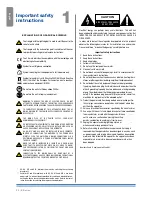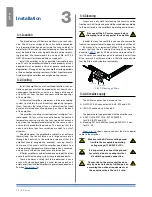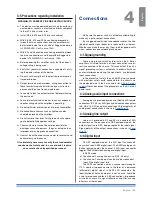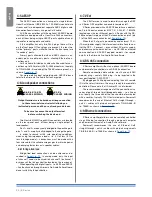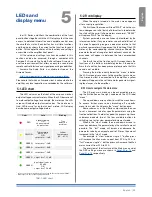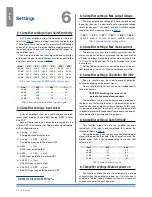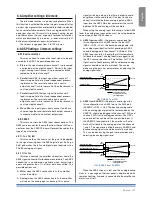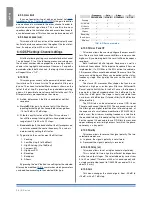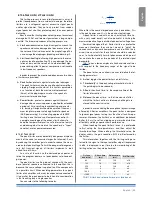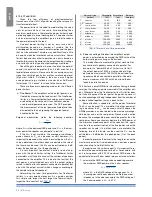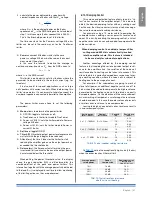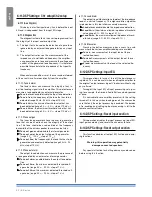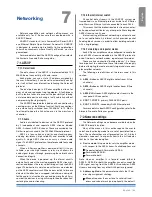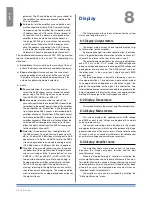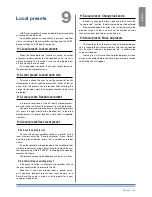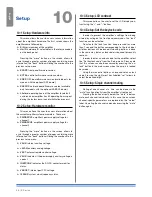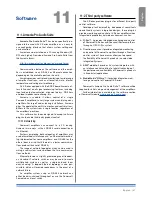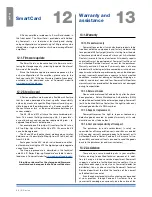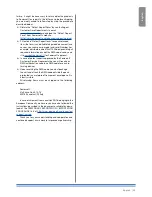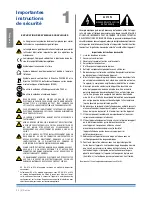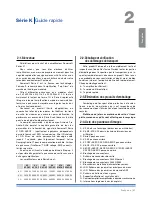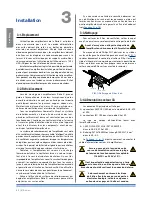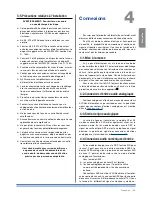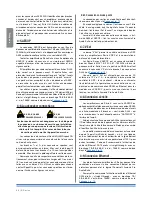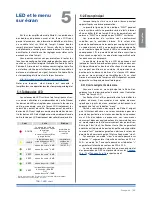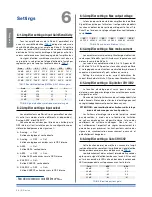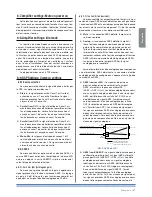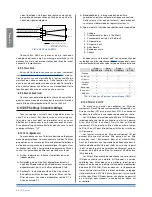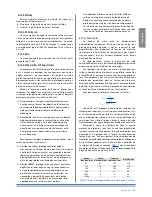
En
gli
sh
gateway). The pc should be on the same subnet of
the amplifier if no routers are present between the
pc and amplifier.
Automatic
: lets the amplifier ask and obtain a net-
work configuration from a DHcp server. Starting
from power-on, the amplifier tries to obtain a valid
ip address from a DHcp server. after a timeout of
30 seconds, if an ip address is not obtained, the
amplifier takes an automatic private address in
the range 169.254.x.y, but continues to search for
a DHcp server. When the DHcp becomes avail-
able, the address is updated. if no DHcp server
is available, the amplifier obtains an ip address by
automatic ip (local link addressing or Zeroconf).
The amplifier behavior complies with rFc 3927, guarantee-
ing the interoperability with any host pc supporting this
standard.
f
f
Set address
: this menu allows to manually set the am-
plifier’s ip address, subnet mask and default gateway.
f
f
Show net config
: this menu shows the current net-
working configuration, either set by the user via the
“Set address” menu or obtained automatically if the
automatic addressing mode is selected.
f
f
audio
Source selection
: this menu allows the user to
select the aES3 stream source to feed the output
power stage. The aES3 signal can come from ei-
ther: aES3-XLr, aES3-a or aES3-B.
Source mode
: this menu allows to selects the
channel(s) contained the selected aES stream to be
forwarded to the output power stage of the amplifier.
The possibilities are: parallel from L (the left channel
from the selected aES3 stream is forwarded to both
amplifier channels), parallel from r (the right channel
from the selected aES3 stream is forwarded to both
amplifier channels), Stereo (the left channel from the
selected aES3 stream goes to channel 1 or the am-
plifier; the right channel from the aES3 stream goes
to the amplifier’s channel 2).
Gain trim
: this parameter trims the digital level of
the aES3 stream. The gain trim scale goes from +5
dB to -40 dB with 0.5 dB steps with respect to 0 dB
equivalent of +13.5 dBu. a 0 dBFS level in the aES3
stream corresponds to an absolute analog level of
+18.5 dBu when a +5 dB gain trim level is applied.
If no link
: this parameter allows the user to choose
the behavior of the amplifier when the digital audio
stream is missing and the “input selection” is set as
kaESOp
OuT (or kaESOp
DSp
OuT). The
two possible alternatives are: Mute and analog. in
analog mode the amplifier automatically switches
to cH1/cH2 analog input if the digital stream is
missing, returning to the digital stream in case this
should become available again. This mode could be
used to implement an analog backup connection for
the digital stream.
Display
8
The Display menu allows the user to monitor the system
status and the performance.
8 : 1.Display: Output meters
The output meters screen shows important output sig-
nal information for the amplifier.
By pressing the right most front panel button, the screen
view is toggled between information relative to channel 1,
channel 2 or relative to the sum of channels 1 and 2.
The output power reported is a peak value reading taken
every 200 ms. in the “c1+2” mode, the rMS voltage and
power readings displayed are the average rMS voltage and
peak power of each channel. The rMS current value, on
the other hand, is the sum of each single channel’s rMS
current level.
The load impedance is indirectly inferred by a succes-
sive approximations. Time between single output imped-
ance approximations depends on the output signal: the
greater the amplitude of the signal, the shorter the time
interval between measurements needed to approximate the
output impedance, the faster the successive approximation
method will converge to the true impedance value.
8 : 2.Display: Temperature
This screen displays the current amplifier temperature.
8 : 3.Display: Mains meters
This screen displays the updated mains rMS voltage
and rMS current levels. Values are displayed in numbers
and as progress bars.
The current and voltage levels displayed in this screen
are approximate values: which serve the purpose of giving a
general indication of the mains levels. please refer to other
sources (such as calibrated multimeters) for reliable and
exact mains voltage and current measurements.
8 : 4.Display: Amplifier name
The amplifier Name menu gives access to two menu
branches: the “Display amp data” function and the “Edit
amplifier name” menu.
When the “Display amp data” function is activated, the
main amplifier screen shows the amplifier name (20 charac-
ters, bold) blinking to a second screen showing the current
selected preset name (40 characters). if the preset has been
altered in any way, the displayed preset name will have a
“Modified” prefix to indicate this.
The amplifier name can be assigned by entering the
“Edit amplifier name” menu.
34 | K Series
Summary of Contents for K2 DSP+AESOP, K3 DSP+AESOP
Page 4: ...Page intentionally left blank 2 K Series...
Page 8: ...A K2 K3 K2 DSP AESOP K3 DSP AESOP 465 32 2 496 456 5 9 482 439 44 32 6 K Series...
Page 88: ...Page intentionally left blank 86 K Series...
Page 89: ...Page intentionally left blank Specifications 87...
Page 90: ...Page intentionally left blank 88 K Series...
Page 91: ......

